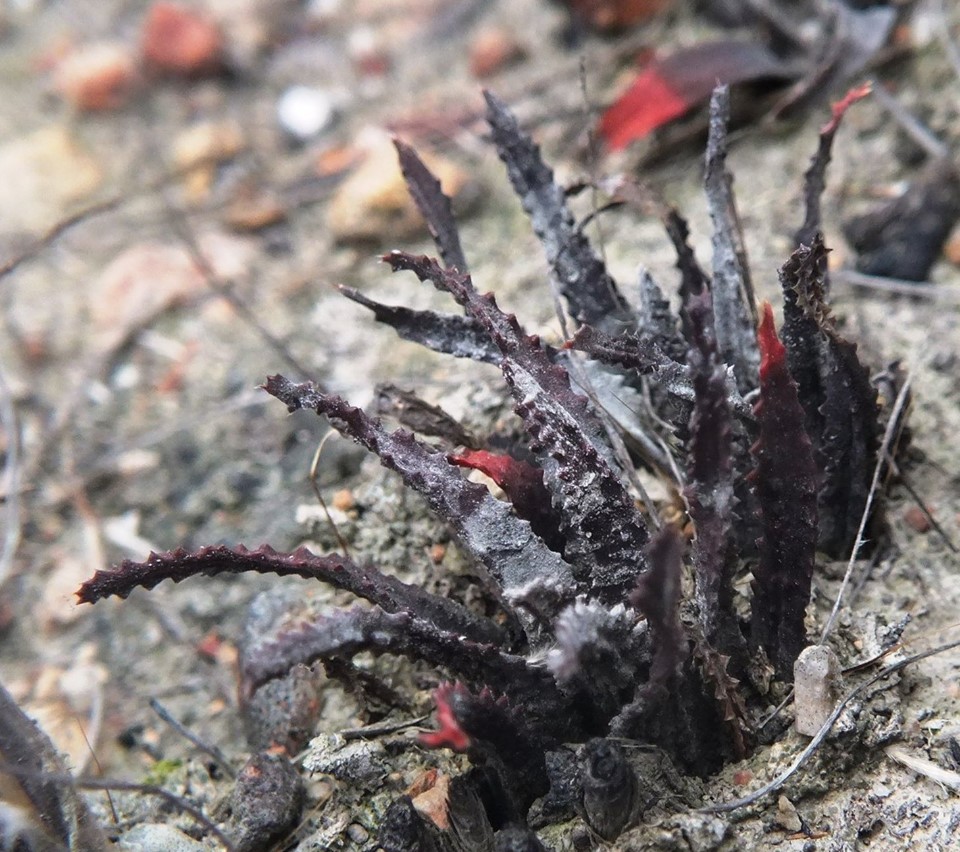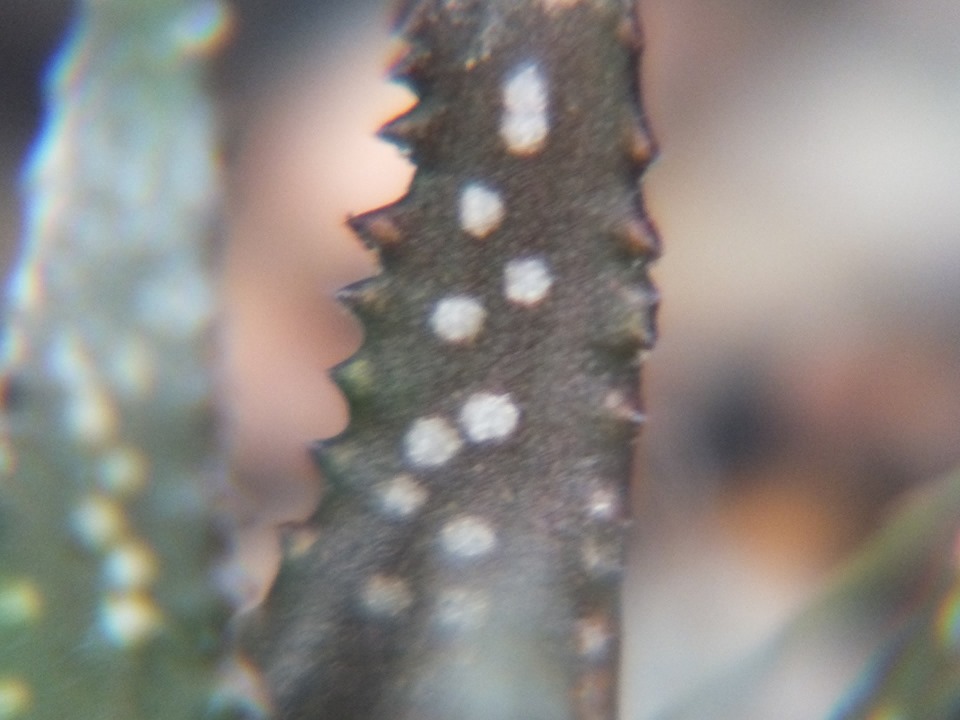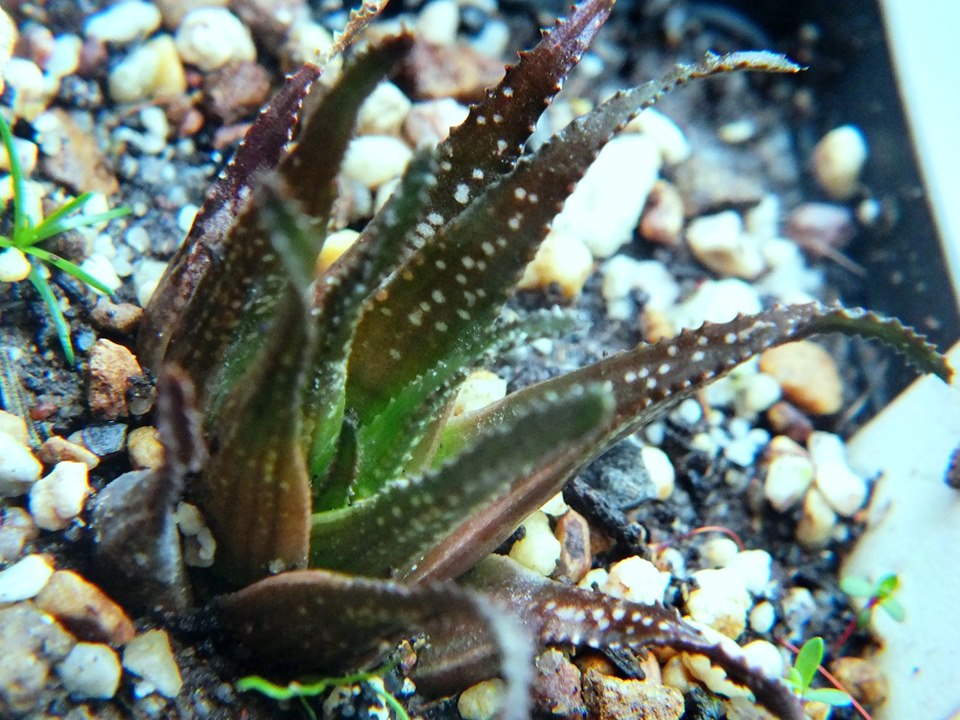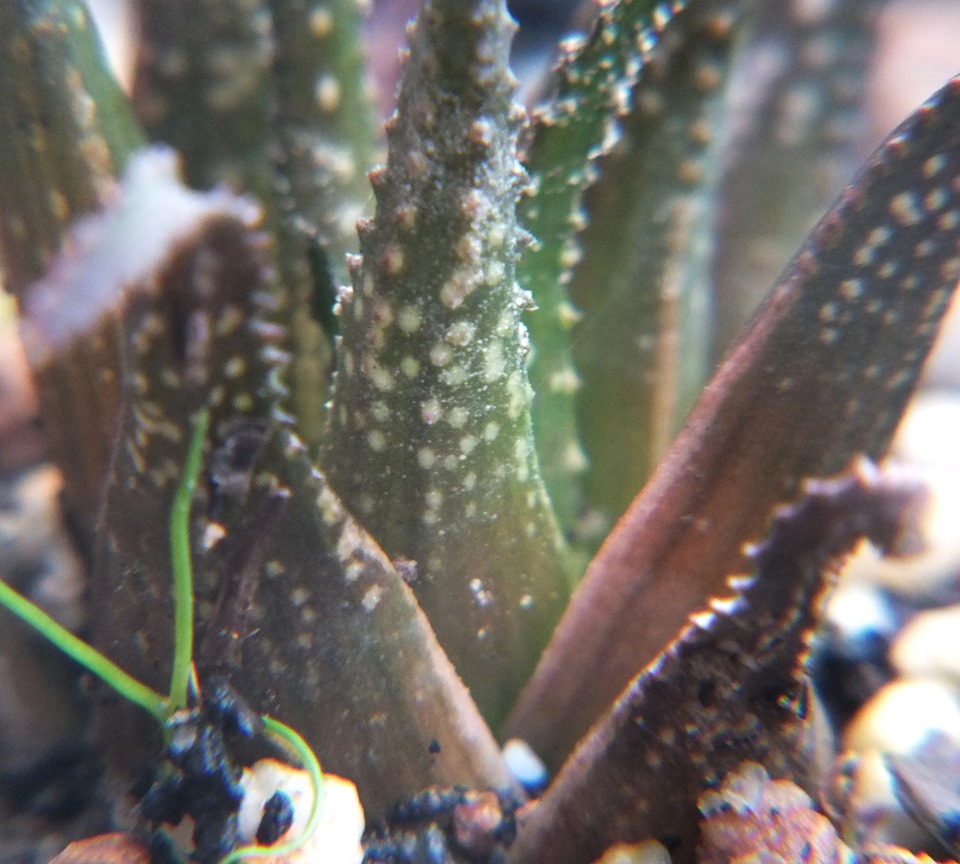49. 2019.7.7 – My argument is of course largely directed at “H. groenewaldii” because the binomial so sadly mirrors the pains of Haworthia classification. When I first wrestled with the issue of H. retusa var nigra in 1969 I did so because of a G. G. Smith’s photograph of a similar plant recorded from Buffeljagsrivier way back pre 1947. I “guessed” that this Buffeljags phenomenon was central to the Southern Cape retusoids and must have some relevance to Smith identifying the Kransriviermond hybrids as H. mutica. So its “(re-)discovery” and description more than 50 years later comes when when we should have learned something about taxonomic problems. Unless, one persists with a blind belief that there are countless species that owe their separate existence to origins from outer space (panspermia) and at any moment, “groenewaldii” (by resort to ordinary common sense) must relate to other haworthias in the Southern Cape. Just as H. floribunda surely does. But I have found it hugely frustrating and sheer tiresome, to have to deal with the kind of taxonomy that gets dished up to collectors by amateur taxonomists in amateur journals who have no greater insight into the mysteries of life than the most modest collector wholly unconcerned with the issues of relationships and origins. So I will turn to “groenewaldii” now and if any reader imputes its extraterrestrial origins, I think they must click elsewhere. :) It is said … ”Hell hath no fury like that of a woman scorned.” Does hell also have no obduracy like that of someone honoured in a plant name, defending it from sub summation? The taxonomist gains too much from the side benefits of using personal names as binomials and I have experienced this with “tauteae”, “meiringii”, “pringlei”, “vincentii”, “armstrongii”, “kingii”, “leightonii”, “blackbeardiana”, “battenii”, “cummingii”, “davidii”, “mortonii”, “jakubii”, “baylissii” to name but a few. So many (with sincere and warm regard for each persona so honoured) that almost the whole nomenclature of Haworthia seems to rest on the creation and preservation of mutual and self-esteem? There is of course a “bayeri” too! I would happily lump that if it produced a truthful classification and if I knew where it better belonged. This is what is described from Buffeljags – are they commonly like this?
The answer to that last question is of course … ”No they are not.” Where do those spots come from? Outer space naturally. :) DNA dropped from a passing comet, and a bit also straying to the floribunda a little further east? See pics. There is also a mutica to the south west with teeth like a floribunda – new species? H. tigrina?
Is there a good explanation for a sequencing product? I mean who said the only problem now is trying to explain a sequencing result? A phyllogram is a print-out of a sequencing exercise that presents a two dimensional tree of relationships. In the sequencing research where I have been involved in (unfortunately, as I said) the names were known to the researchers only by virtue of the written label attached to each sample. How a result can possibly be interpreted on that basis alone, staggers the imagination. On the other hand there are scientists who do at least have some idea of what the names are generally attached to, and for some weird reason assume the phyllogram is telling them more than what they were able to deduce from direct observation. That is wishful thinking. Is that somehow linked to the equally weird lack of a rational species definition applicable to the plant world? It did NOT need DNA sequencing to tell anybody that Haworthia was three quite different sets of things and that Haworthia sensu stricto was further from Aloe than either Haworthiopsis or Tulista. It is no joke that there is one school that proposes one large genus Aloe, and another that splits it into a myriad of genera. The same information is available to both groups. The truth may be that DNA sequencing is also telling us that our species concepts are simply too narrow and we do not like that.






